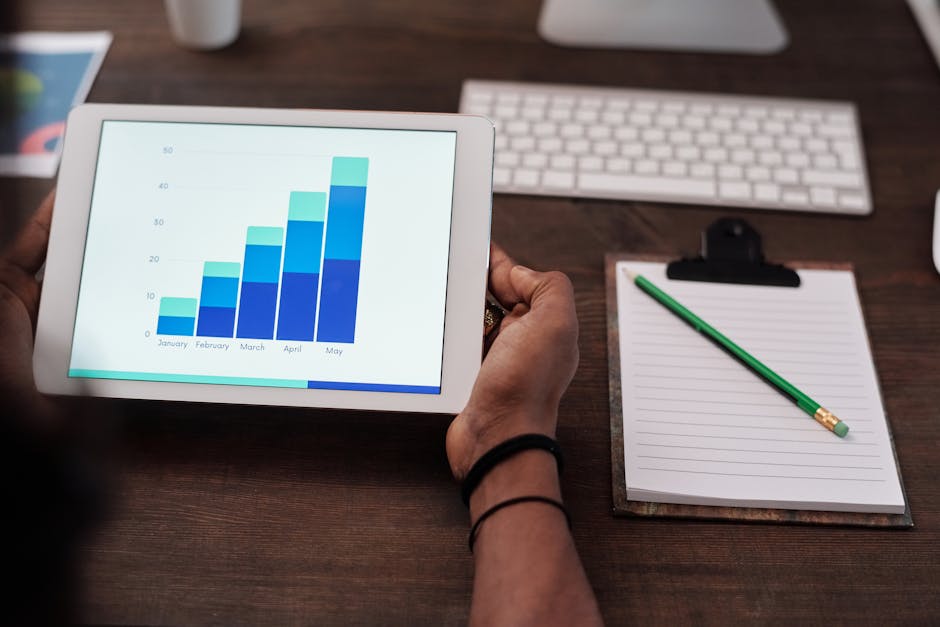Sharper Quotes: Data Analytics for Accurate Pricing
In the ever-evolving landscape of business, pricing strategies hold the key to success. Unlocking the potential of data analytics, this article delves into the art of crafting sharper quotes.
By harnessing historical pricing data, customer behavior insights, and market trends analysis, businesses can implement dynamic pricing models and optimize strategies with AI.
Join us as we explore the power of data analytics for accurate pricing, illuminating the path to informed decision-making and enhanced profitability.
Key Takeaways
- Data analytics plays a crucial role in determining accurate pricing through statistical methods and predictive modeling.
- Utilizing historical pricing data helps identify patterns and trends for informed pricing strategies.
- Analyzing customer behavior provides insights for pricing strategies and helps anticipate customer needs.
- Market trends analysis helps businesses stay competitive and adapt to changes in consumer behavior.
Understanding the Role of Data Analytics

Data analytics plays a crucial role in determining accurate pricing through the use of advanced statistical methods and predictive modeling. By leveraging data driven decisions and business intelligence insights, organizations can gain a deeper understanding of market dynamics, customer behavior, and competitive landscapes. This, in turn, enables them to set prices that reflect the true value of their products or services while remaining competitive in the market.
Through data analytics, businesses can extract valuable insights from large and complex datasets, allowing them to identify patterns, trends, and correlations that inform pricing strategies. By analyzing historical sales data, customer demographics, and purchasing patterns, companies can make more informed pricing decisions, optimizing their revenue and profitability.
Furthermore, data analytics empowers organizations to conduct thorough competitor analysis, understanding how their pricing strategies compare to others in the industry. This intelligence provides a comprehensive view of the market, enabling businesses to adjust their pricing strategies in real-time to capitalize on opportunities and remain competitive.
In essence, data analytics is the cornerstone of accurate pricing, providing businesses with the necessary tools to make informed decisions that drive profitability and sustainable growth.
Leveraging Historical Pricing Data

Leveraging historical pricing data enables businesses to identify patterns and trends that inform pricing strategies, providing valuable insights for making informed decisions in setting competitive prices. Historical trends reveal how prices have fluctuated over time in response to various factors such as seasonality, economic conditions, and consumer behavior. By analyzing this data, businesses can gain a deeper understanding of market dynamics and customer preferences, enabling them to anticipate future pricing trends.
Predictive modeling plays a pivotal role in leveraging historical pricing data. By using advanced statistical techniques and machine learning algorithms, businesses can forecast future price movements with a high degree of accuracy. This allows for proactive pricing strategies that are responsive to changing market conditions, giving businesses a competitive edge.
Furthermore, historical pricing data can also help in identifying pricing inefficiencies and areas for optimization. By examining past pricing strategies and their outcomes, businesses can refine their pricing models to maximize profitability while remaining attractive to customers.
Utilizing Customer Behavior Insights

Applying data analytics to understand customer behavior is essential for developing accurate pricing strategies in today’s competitive market. Customer segmentation and analyzing behavioral patterns are crucial components in this process. By categorizing customers into groups based on their preferences, purchasing habits, and demographics, businesses can tailor pricing strategies to specific segments, maximizing revenue and customer satisfaction.
Analyzing behavioral patterns, such as purchase frequency, product preferences, and response to promotions, enables businesses to anticipate customer needs and optimize pricing strategies accordingly.
Predictive modeling plays a significant role in utilizing customer behavior insights for pricing. By leveraging historical data and customer behavior trends, businesses can forecast future purchasing patterns and price sensitivity. This allows for the development of dynamic pricing models that adjust in real-time based on customer behavior, maximizing revenue opportunities while remaining competitive in the market.
Moreover, understanding price elasticity – the sensitivity of customer demand to price changes – is essential for accurate pricing. By quantifying the impact of price changes on customer purchasing behavior, businesses can set optimal prices that balance profitability with market demand.
Incorporating customer behavior insights into pricing strategies empowers businesses to adapt to evolving market dynamics and gain a competitive edge.
Incorporating Market Trends Analysis

Incorporating market trends analysis into pricing strategies is crucial for businesses to stay competitive in today’s dynamic market environment. Utilizing real-time data allows companies to identify and respond to shifting trends quickly, giving them a significant edge in pricing decisions.
Utilizing Real-Time Data
Utilizing real-time data for market trends analysis is essential for accurate pricing in the realm of data analytics. By incorporating real-time insights and predictive analysis, businesses can make informed pricing decisions that reflect current market conditions. Here are four key benefits of utilizing real-time data for market trends analysis:
-
Immediate Reaction: Real-time data allows businesses to react swiftly to market changes, ensuring that pricing strategies remain relevant.
-
Enhanced Accuracy: By analyzing real-time data, businesses can ensure that their pricing models are based on the most up-to-date information, leading to more accurate pricing decisions.
-
Competitive Advantage: Utilizing real-time data provides businesses with a competitive edge by enabling them to adjust prices in response to market trends faster than their competitors.
-
Improved Customer Satisfaction: Accurate pricing based on real-time insights can lead to better customer satisfaction, as prices are aligned with current market conditions.
Enhancing Competitive Positioning
Building a competitive edge through market trends analysis is essential for businesses seeking to maintain relevance and adapt to dynamic market conditions. Incorporating market trends analysis into strategic planning provides valuable insights for improving decision making and gaining a strategic advantage.
By closely monitoring market trends, businesses can identify emerging customer preferences, industry shifts, and competitive movements. This information enables companies to fine-tune their product offerings, pricing strategies, and marketing initiatives to better align with current market demands.
Additionally, understanding market trends allows businesses to anticipate changes in consumer behavior and adjust their business models accordingly, thus staying ahead of the competition.
Implementing Dynamic Pricing Models

Implementing dynamic pricing models requires a comprehensive understanding of consumer behavior and market dynamics to effectively optimize pricing strategies. This approach enables businesses to make real-time adjustments and stay ahead in a competitive market landscape.
Here are four key points to consider when implementing dynamic pricing models:
-
Data-driven Insights: Utilize advanced analytics to gather and analyze real-time consumer data, allowing for informed pricing decisions based on current market trends and customer preferences.
-
Competitive Analysis: Conduct thorough assessments of competitors’ pricing strategies and market positioning to ensure that your dynamic pricing model remains competitive and attractive to customers.
-
Personalized Pricing: Leverage customer segmentation and personalized pricing strategies to offer tailored pricing options that resonate with diverse customer segments, enhancing overall customer satisfaction and loyalty.
-
Dynamic Algorithm Optimization: Continuously refine and optimize pricing algorithms based on real-time data and market changes to maximize profitability and maintain a competitive edge.
Optimizing Pricing Strategy With AI

Businesses can enhance their pricing strategies by leveraging AI for optimizing pricing strategy. AI algorithms can analyze vast amounts of data to identify patterns and make real-time pricing adjustments.
Pricing optimization through AI involves using predictive modeling to anticipate customer behavior, demand forecasting to adjust prices based on anticipated demand, and customer segmentation to tailor pricing strategies to specific customer groups.
AI can also provide competitive intelligence by analyzing competitors’ pricing strategies and market trends, enabling businesses to make informed pricing decisions.
By incorporating AI into pricing strategy, businesses can achieve more accurate and dynamic pricing, leading to increased competitiveness and profitability.
Additionally, AI can continuously learn and adapt to changing market conditions, ensuring that pricing strategies remain effective over time.
Ultimately, the use of AI in pricing strategy allows businesses to move beyond traditional static pricing models and adopt a more agile and data-driven approach, leading to improved customer satisfaction and revenue growth.
Conclusion
In conclusion, data analytics plays a crucial role in accurate pricing strategies. By leveraging historical pricing data, understanding customer behavior insights, and incorporating market trends analysis, businesses can implement dynamic pricing models to optimize their pricing strategy.
For example, a retail company used data analytics to analyze customer purchasing patterns and adjusted their pricing strategy accordingly, leading to a significant increase in sales and customer satisfaction.
Contact us to discuss our services now!
